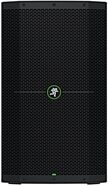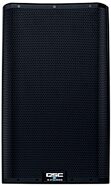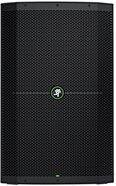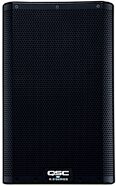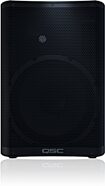Behringer XENYX XL3200 32-Channel Mixer
No longer available at zZounds

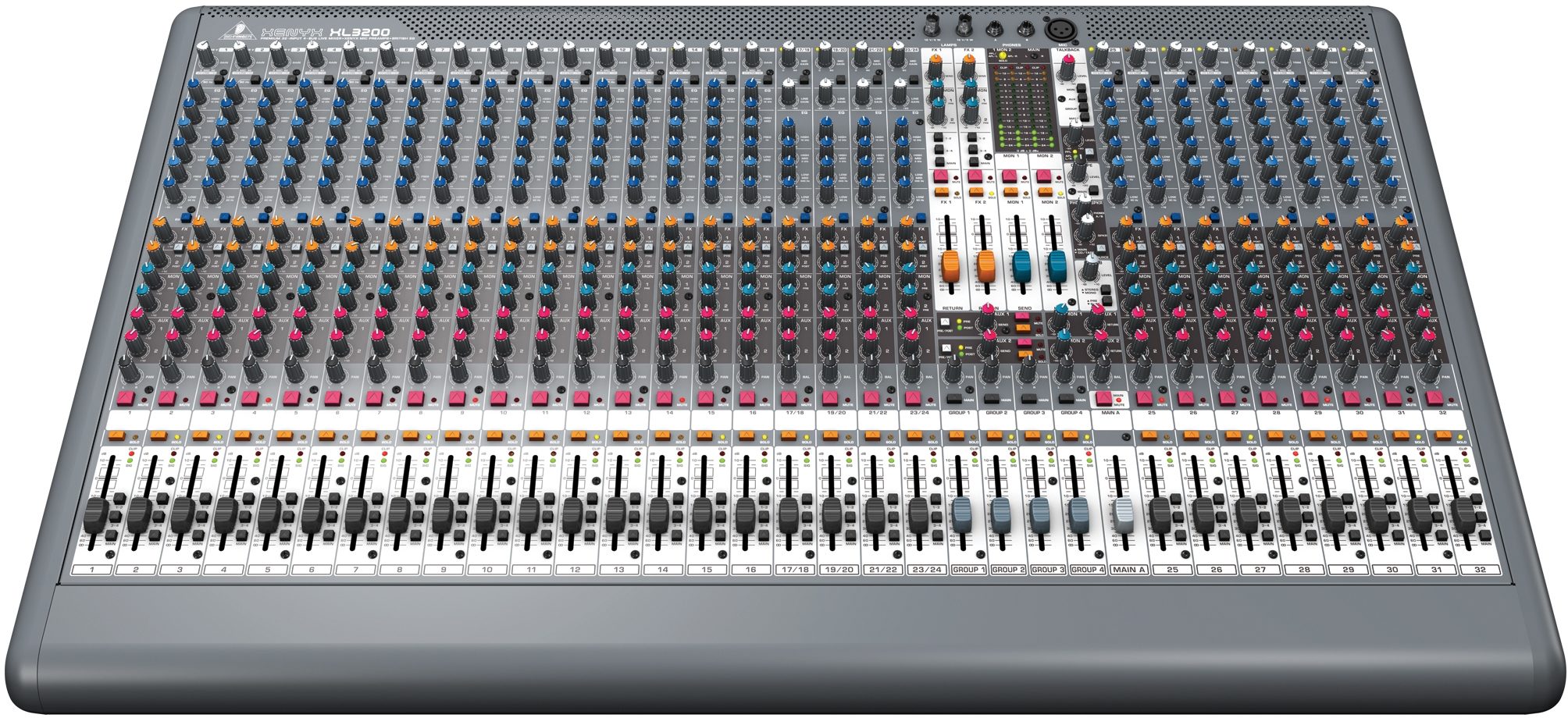



A impressive value, this mixer delivers maximum I/O in a minimal footprint: 12 mic preamps with inserts, 12 stereo line inputs, 4 subgroups and 6 auxes.
Overview
An ultra-low noise, high-headroom analog mixer for live, front-of-house, monitor, corporate and touring audio applications, the Behringer XENYX XL3200 4 Bus Mixer features an intuitive layout and color-coded control interface designed for ease of use.
Built around Behringer's proven XENYX high-headroom, and featuring low noise mic preamps and warm, musical EQ, the XL3200 combines professional features, dramatic styling and astounding value.
- Neo-classic British 4-band EQs with 2 semi-parametric mid bands for warm and musical sound
- 4 Subgroup outputs with inserts plus 2 independent main outputs with inserts on Main A
- 6 Aux sends per channel: 4 pre/post fader switchable for flexible routing
- Channel inserts and direct outputs on each mono channel
- Clip and Signal LEDs plus 80 Hz, EQ, Mute, Solo, Subgroup and Main routing switches on all channels
- 2 multi-functional stereo FX returns with comprehensive routing options
- 2 Headphone and Speaker outputs with selectable Main/CD/Tape inputs
- Solo-In-Place with PFL/AFL function plus full-featured Talkback section
- Long-wearing 60 mm logarithmic-taper faders and sealed rotary controls
- Internal autorange power supply for maximum flexibility (100 - 240 V~), noise-free audio, superior transient response plus low power consumption for energy saving
- High-quality components and… read more exceptionally rugged construction ensure long life
- Conceived and designed by Behringer Germany
Connect up to 24 microphones (or other mono instruments) and up to 4 stereo instruments (keyboards, for example). You also get four buses, allowing you to assign multiple channels, say all the mics on a drum kit or all the backup singers' mics, to a single fader.
Best of all, you don't need a black belt in engineering to operate the XL3200. To get started, assign all mics and instruments to their channels by connecting them to the corresponding jacks on the back panel. Now, get ready to quickly become acquainted with the incredibly user-friendly design.
At the top of each mono channel strip, you'll find a Trim dial (White) for adjusting input gain and an 80 Hz switch that can eliminate unwanted infrasonics such as mic-handling noise.
Each mono channel has a 4-band EQ (High, High Mid, Low Mid, Low). High Mid and Low Mid dials (Blue) are each paired with a FREQ control (Lighter Blue) that allows you to select the frequency boosted or cut. Directly below the EQ, there's an EQ switch allowing you to switch between processed and unprocessed signals.
The EQ's on British consoles from the 60s and 70s are what many engineers believe does their sound the best justice. When it comes to tweaking your sound, they're kind, gentle and above all, musical. It's like drinking a fine scotch instead of fortified wine, or maybe receiving a warm hug instead of a kick to the crotch.
British EQ's distinct configuration of wider curves/lower Q and harmonic phase characteristics allows you to add or subtract EQ more generously than you can with conventional EQ circuit designs. When you add low midrange, you get a firmer sound instead of a nasty bonk. When you back high frequencies off a bit, treble backs off just a hair instead of turning muffled.
Stereo channels are configured in the same way, but with a fixed-frequency 4-band EQ (Blue). They are equipped with 1/4 inch stereo inputs, as well as XLR mono inputs, providing 4 additional Mic channels.
The FX section is positioned on the middle right section of the console. Both FX 1 and FX 2 signals have orange faders; Solo and Mute switches; 1-2 and 3-4 switches that assign the signal to subgroups; Main switches to route the signals to the main outputs; Mon dials (Blue) that determine the level of FX heard in Monitor sends 1 & 2; and Send dials (Orange) for adjusting the volume of all FX send signals. Both monitor sends also have their own dedicated faders (Blue), as well as Mute and Solo switches.
The Main A section lies in the bottom right section of the board. It gives you a channel fader (Light Grey); a 13-LED master level meter in the top right corner gives you a dynamic visual gauge of overall output; a Mute switch (Red) mutes all input channels except CD/Tape inputs; and a BAL control (Black) adjusts the mix of the left and right output signal before they are routed through the Main A output. Above, you'll find the Main B section, which governs the signal sent through the Main B outputs on the back panel. Use the Main B section and outputs to connect to a separate power amplifier and multiple loudspeakers, or to a stereo recording system.
The XL3200 features a Talkback section in the upper right corner with its own XLR input, Level control (Red), and switches that allow you to send its signal to either the Mon, Aux, Group or Main outputs. Finally, a pair of headphone inputs at the top of the board allows you to personally monitor your mix, and a pair of BNC lamp inputs ensures you'll never have to mix in the dark.
The next section to the right contains the Aux Returns. Stereo Aux inputs 1 & 2 allow you to connect more effects processors or submixers, while stereo FX 1 & 2 returns accept processed signals sent from the FX 1 and FX 2 outputs.
Left and right Speaker 1/4 inch outputs allow you to connect monitor speakers that provide the same signal as the headphone outputs.
Each subgroup has its own Insert and OUT 1/4 inch jacks. The inserts allow you to connect noise gates, compressors or equalizers, while the Out jacks send the subgroup signal to, for example, a multi-track recorder.
Along the bottom of the back panel, you'll find the mono and stereo channel inserts. Mono channels feature both a 1/4 inch and XLR input, as well as an Insert jack for applying outboard equipment and a Direct Out jack for sending signal to a device such as a multi-track recorder. Stereo channels feature a single XLR input and dual 1/4 inch inputs. read less
Built around Behringer's proven XENYX high-headroom, and featuring low noise mic preamps and warm, musical EQ, the XL3200 combines professional features, dramatic styling and astounding value.
Features:
- 12 state-of-the-art XENYX Mic Preamps plus 4 stereo Line inputs with ultra-high RFI suppression designed for live application- Neo-classic British 4-band EQs with 2 semi-parametric mid bands for warm and musical sound
- 4 Subgroup outputs with inserts plus 2 independent main outputs with inserts on Main A
- 6 Aux sends per channel: 4 pre/post fader switchable for flexible routing
- Channel inserts and direct outputs on each mono channel
- Clip and Signal LEDs plus 80 Hz, EQ, Mute, Solo, Subgroup and Main routing switches on all channels
- 2 multi-functional stereo FX returns with comprehensive routing options
- 2 Headphone and Speaker outputs with selectable Main/CD/Tape inputs
- Solo-In-Place with PFL/AFL function plus full-featured Talkback section
- Long-wearing 60 mm logarithmic-taper faders and sealed rotary controls
- Internal autorange power supply for maximum flexibility (100 - 240 V~), noise-free audio, superior transient response plus low power consumption for energy saving
- High-quality components and… read more exceptionally rugged construction ensure long life
- Conceived and designed by Behringer Germany
The Ins and Outs
Some manufacturers can be sneaky when they tell you how many inputs their mixers have, counting features like CD/Tape In as an input. But the XL3200 really gives you 24 mono channels and 4 stereo channels (with two 1/4 inch inputs apiece, an additional 8 line-level inputs which can also be used for 4 additional mono mic channels), making it easy to accommodate a wide variety of live performance configurations.Connect up to 24 microphones (or other mono instruments) and up to 4 stereo instruments (keyboards, for example). You also get four buses, allowing you to assign multiple channels, say all the mics on a drum kit or all the backup singers' mics, to a single fader.
Best of all, you don't need a black belt in engineering to operate the XL3200. To get started, assign all mics and instruments to their channels by connecting them to the corresponding jacks on the back panel. Now, get ready to quickly become acquainted with the incredibly user-friendly design.
Plenty of Channels, All in Living Color
All dials on the XL3200 are assigned to colors that not only allow you to easily locate each function, but to also quickly identify corresponding faders.At the top of each mono channel strip, you'll find a Trim dial (White) for adjusting input gain and an 80 Hz switch that can eliminate unwanted infrasonics such as mic-handling noise.
Each mono channel has a 4-band EQ (High, High Mid, Low Mid, Low). High Mid and Low Mid dials (Blue) are each paired with a FREQ control (Lighter Blue) that allows you to select the frequency boosted or cut. Directly below the EQ, there's an EQ switch allowing you to switch between processed and unprocessed signals.
British EQ
British EQ is a smashing thing to have on your side when you start reaching for those channel equalization knobs at a live concert or in the studio.The EQ's on British consoles from the 60s and 70s are what many engineers believe does their sound the best justice. When it comes to tweaking your sound, they're kind, gentle and above all, musical. It's like drinking a fine scotch instead of fortified wine, or maybe receiving a warm hug instead of a kick to the crotch.
British EQ's distinct configuration of wider curves/lower Q and harmonic phase characteristics allows you to add or subtract EQ more generously than you can with conventional EQ circuit designs. When you add low midrange, you get a firmer sound instead of a nasty bonk. When you back high frequencies off a bit, treble backs off just a hair instead of turning muffled.
Back to the Strip
Controls for the channel's FX (Orange), Mon (Blue) and Aux (Red) sends are directly below the EQ section. Use these to assign a channel to an outboard FX processor or monitor and auxiliary channels. Further down the channel strip, the Pan control (Black) determines the signal's position in the stereo mix. The channel fader (Black) adjusts the level of the channel signal as part of the main mix. Press the 1-2 or 3-4 switches to assign the channel to a bus.Stereo channels are configured in the same way, but with a fixed-frequency 4-band EQ (Blue). They are equipped with 1/4 inch stereo inputs, as well as XLR mono inputs, providing 4 additional Mic channels.
Rockin' Bureaucracy
Once all mics and instruments are connected, it's time to take a look at the Main, subgroup, Monitor and FX sections. All four subgroups' controls are positioned in the lower right corner of the mixer. They feature individual faders with Clip LEDs, Solo switches and Pan controls to adjust the signal's position in the stereo image.The FX section is positioned on the middle right section of the console. Both FX 1 and FX 2 signals have orange faders; Solo and Mute switches; 1-2 and 3-4 switches that assign the signal to subgroups; Main switches to route the signals to the main outputs; Mon dials (Blue) that determine the level of FX heard in Monitor sends 1 & 2; and Send dials (Orange) for adjusting the volume of all FX send signals. Both monitor sends also have their own dedicated faders (Blue), as well as Mute and Solo switches.
The Main A section lies in the bottom right section of the board. It gives you a channel fader (Light Grey); a 13-LED master level meter in the top right corner gives you a dynamic visual gauge of overall output; a Mute switch (Red) mutes all input channels except CD/Tape inputs; and a BAL control (Black) adjusts the mix of the left and right output signal before they are routed through the Main A output. Above, you'll find the Main B section, which governs the signal sent through the Main B outputs on the back panel. Use the Main B section and outputs to connect to a separate power amplifier and multiple loudspeakers, or to a stereo recording system.
The XL3200 features a Talkback section in the upper right corner with its own XLR input, Level control (Red), and switches that allow you to send its signal to either the Mon, Aux, Group or Main outputs. Finally, a pair of headphone inputs at the top of the board allows you to personally monitor your mix, and a pair of BNC lamp inputs ensures you'll never have to mix in the dark.
The Back Story
The back panel of the XL3200 mixer features an intuitive patch bay that gives you tons of flexibility in configuring a live show. In the upper left corner you'll find the Main Outputs section. There's left and right XLR outputs for connecting to PA speakers, as well as dual 1/4 inch inserts for connecting a dynamics processor or equalizer to further tweak the main signal. There's also dual Out B jacks governed by the Main B dial on front. Next door to the Main Outputs section is the FX/Mon/Aux Sends section. The FX 1 and FX 2 1/4 inch outputs send signal to outboard effects processors. Mon 1 and Mon 2 XLR outputs send signal to monitors, and Aux 1 and Aux 2 XLR outputs can be used for either effects processors or monitors.The next section to the right contains the Aux Returns. Stereo Aux inputs 1 & 2 allow you to connect more effects processors or submixers, while stereo FX 1 & 2 returns accept processed signals sent from the FX 1 and FX 2 outputs.
Left and right Speaker 1/4 inch outputs allow you to connect monitor speakers that provide the same signal as the headphone outputs.
Each subgroup has its own Insert and OUT 1/4 inch jacks. The inserts allow you to connect noise gates, compressors or equalizers, while the Out jacks send the subgroup signal to, for example, a multi-track recorder.
Along the bottom of the back panel, you'll find the mono and stereo channel inserts. Mono channels feature both a 1/4 inch and XLR input, as well as an Insert jack for applying outboard equipment and a Direct Out jack for sending signal to a device such as a multi-track recorder. Stereo channels feature a single XLR input and dual 1/4 inch inputs. read less
Documents and Manuals
For support or warranty questions, please contact the manufacturer:
Web: https://www.behringer.com/service.html
Web: https://www.behringer.com/service.html
Reviews
Reviewers gave this product an overall rating of 4 out of 5 stars.
(9 ratings)
Submitted April 20, 2010 by a customer from gmail.com
"A mega-channel console for very, very little money. Terms and conditions apply."
It's a value product and is a worthwhile for someone who needs a mega channel console for little money. It works, but i would love to wish that i am one of the rare recipient of bad support and badly QC-ed stuff. Somehow the web reviews i've already read of their other gear, and my personal experience with other gear makes me view it as 'doubtful'. And for that, i reserve my recommendations.
Sound
I use this for a variety of more budget-strapped live shows, where customers who rent my equipment can't afford to spec stuff like Allen and Heath and it's counterparts. Having said that, I find it as quiet and transparent for even a mixer almost double the price - Very well done. Seems to lack a bit of head room, but okay for most purposes. Yamaha MG series beat it in this respective, but holds it's own quite well as Yamaha's here sell for about 1.5 times the price for less features. Bottom line: You get what you pay for. EQ is a great improvement over the SL series. Still as effective, but more 'gentle' and 'warm' - simply put, more musical. I wouldn't compare it with actual top-notch British sound consoles, but it's not bad. I actually prefer it's sound over the Yamaha MG which i use also. That's a major statement.
Features
Comes with only the power cord, but it's PACKED. 6 aux, 4 band sweepable mids EQ, 4 subgroups, 2 stereo mains, individual switchable phantoms, direct out, insert, etc, etc, etc... Behringer went… read more all out in this respect. And this is what caused me to buy it anyway. Features are very usable, too... Only wished all 6 auxes have TRS jacks instead of XLR outs to match the other consoles. Dual lamps, dual headphone outs, rubberized area (for labeling) under faders a very thoughtful feature.
Ease of Use
Somethings can get in the way of each other - the aux masters and returns can be confusing, and the phantom switch is at the back - but it shows how they squeezed the space for maximum features in the smallest footprint possible. Understandable. A little hard to use, but not uncomprehend-able, except for the XLR aux outs.
Quality
Unfortunately,this is where i would be criticizing quite badly - channel 31 doesn't work from show 2 onwards, and the right master A failed after show 10. Not good. It's rectified after sending to the distributor for a warranted service, but that meant going through the sucky Behringer Malaysia distributor and a whole month of headaches. Hopes it holds at least as well to the SL3242FX-PRO i still use occasionally (which is having some wear and tear-related problems after a long 6 years of almost non-stop rather trouble free abuse)
Value
You cannot find anything better for the price. A straight forward mixer for straight forward money. 100mm faders will make it a 10. But you can't really want more for the money, yet Behringer might still do more. Rejoice, people!
Manufacturer Support
Local distributor sucks. And i've said this a million times. Behringer makes good products, but some of the people that distributes the goods for them are very poorly chosen. Sad.
The Wow Factor
It's a mixer. So?
Musical Background:
Sound Engineer
Musical Style:
Almost every damn thing, i've been through, but mostly deals with Christian stuff. read less
Sound
I use this for a variety of more budget-strapped live shows, where customers who rent my equipment can't afford to spec stuff like Allen and Heath and it's counterparts. Having said that, I find it as quiet and transparent for even a mixer almost double the price - Very well done. Seems to lack a bit of head room, but okay for most purposes. Yamaha MG series beat it in this respective, but holds it's own quite well as Yamaha's here sell for about 1.5 times the price for less features. Bottom line: You get what you pay for. EQ is a great improvement over the SL series. Still as effective, but more 'gentle' and 'warm' - simply put, more musical. I wouldn't compare it with actual top-notch British sound consoles, but it's not bad. I actually prefer it's sound over the Yamaha MG which i use also. That's a major statement.
Features
Comes with only the power cord, but it's PACKED. 6 aux, 4 band sweepable mids EQ, 4 subgroups, 2 stereo mains, individual switchable phantoms, direct out, insert, etc, etc, etc... Behringer went… read more all out in this respect. And this is what caused me to buy it anyway. Features are very usable, too... Only wished all 6 auxes have TRS jacks instead of XLR outs to match the other consoles. Dual lamps, dual headphone outs, rubberized area (for labeling) under faders a very thoughtful feature.
Ease of Use
Somethings can get in the way of each other - the aux masters and returns can be confusing, and the phantom switch is at the back - but it shows how they squeezed the space for maximum features in the smallest footprint possible. Understandable. A little hard to use, but not uncomprehend-able, except for the XLR aux outs.
Quality
Unfortunately,this is where i would be criticizing quite badly - channel 31 doesn't work from show 2 onwards, and the right master A failed after show 10. Not good. It's rectified after sending to the distributor for a warranted service, but that meant going through the sucky Behringer Malaysia distributor and a whole month of headaches. Hopes it holds at least as well to the SL3242FX-PRO i still use occasionally (which is having some wear and tear-related problems after a long 6 years of almost non-stop rather trouble free abuse)
Value
You cannot find anything better for the price. A straight forward mixer for straight forward money. 100mm faders will make it a 10. But you can't really want more for the money, yet Behringer might still do more. Rejoice, people!
Manufacturer Support
Local distributor sucks. And i've said this a million times. Behringer makes good products, but some of the people that distributes the goods for them are very poorly chosen. Sad.
The Wow Factor
It's a mixer. So?
Musical Background:
Sound Engineer
Musical Style:
Almost every damn thing, i've been through, but mostly deals with Christian stuff. read less
30 of 31 people (97%) people found this review helpful. Did you?
Thanks for your opinion!
No longer available at zZounds
In most cases, a product is unavailable because it has been discontinued by the manufacturer
This is a carousel with product cards. Use the previous and next buttons to navigate.






